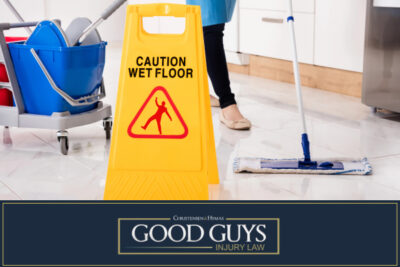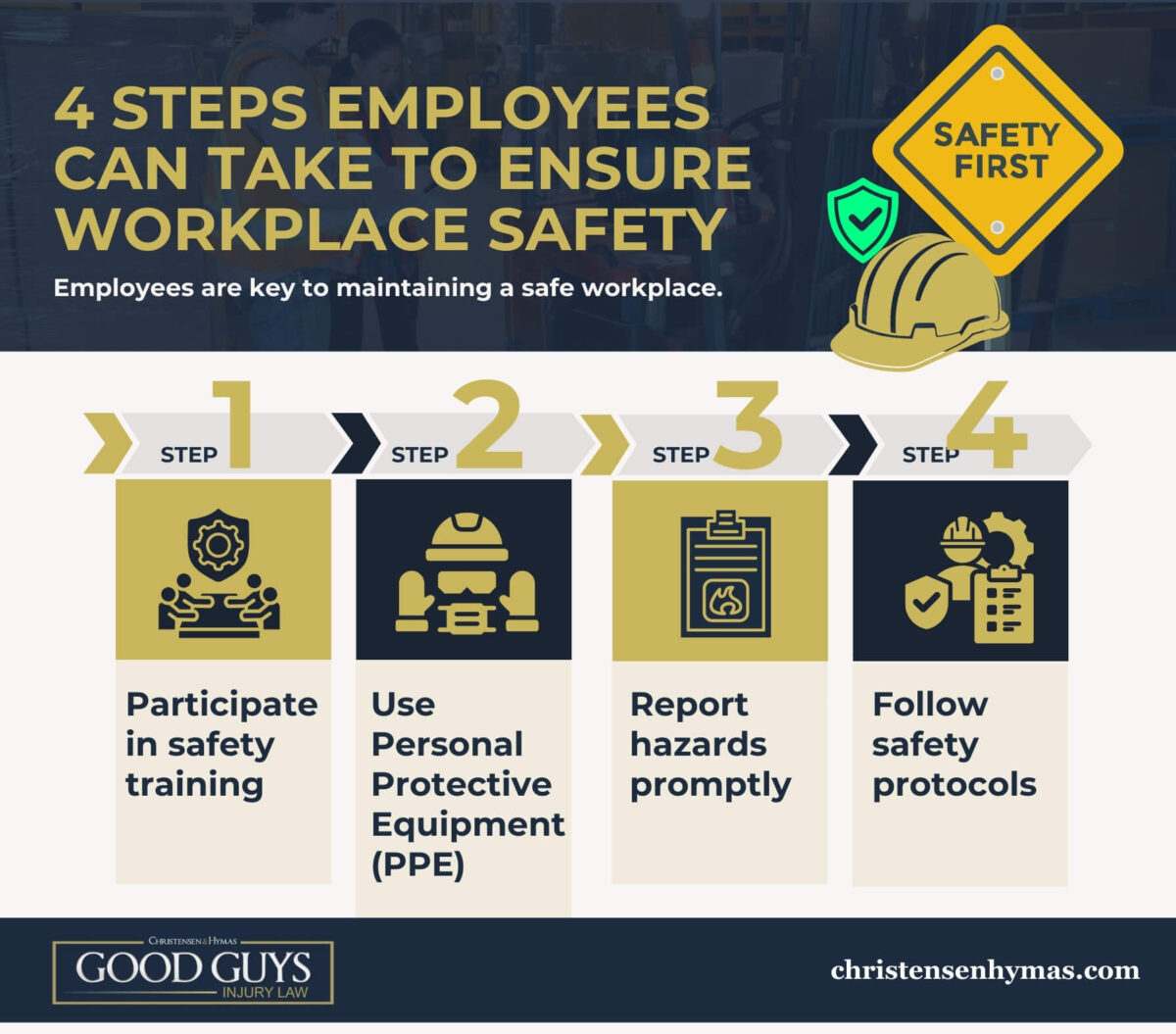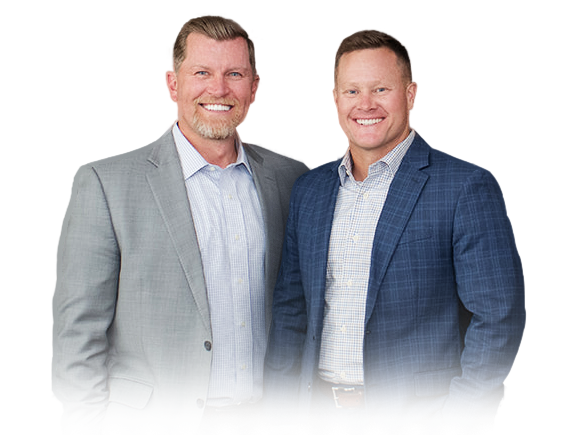
Every worker deserves a safe and healthy workplace to perform their job. Workplace safety isn’t just a privilege—it’s a fundamental right.
Good Guys Injury Law is dedicated to ensuring that workers know and defend their rights. Employers are legally required to minimize hazards in the workplace. Employees also have an important role in identifying and reporting unsafe conditions. Together, employers and employees can create an environment where everyone feels secure.
Table of Contents
Legal Protections for Workplace Safety
Federal laws protect employees by setting clear standards for workplace safety. These laws include the Occupational Safety and Health Act (OSH Act) and OSHA standards. They create a strong legal framework, uphold workers’ rights, and ensure employers meet their obligations.
Occupational Safety and Health Administration (OSHA) Regulations
The Occupational Safety and Health Administration (OSHA) is at the forefront of workplace safety. It sets and enforces standards to prevent accidents and protect employees from harm. These regulations cover various safety measures, from hazard communication to machine guarding.
OSHA’s fall protection standards address one of the leading causes of workplace injuries: falls. Employers must provide the proper equipment and training and ensure safe practices are in place to prevent accidents. OSHA’s rules on hazardous chemicals require clear labeling and safety data sheets. Proper training is also necessary to minimize risks.
Federal OSHA inspection ensures on-site compliance. These inspections assess workplace conditions and identify areas where employers must improve. By enforcing these standards, OSHA is critical in maintaining safe and healthful workplaces.
Employer Responsibilities to Provide a Safe Environment
Employers are accountable for ensuring a workplace free from hazards. OSHA requires employers to identify and mitigate risks proactively.
This includes conducting regular safety audits and providing adequate training programs. Employees should wear personal protective equipment (PPE) and receive proper training. For example, workers in machinery industries must be trained in safe handling and emergency procedures.
Employers must also display the required OSHA law poster in a visible location. The poster outlines workers’ rights and employer obligations. Failure to fulfill these duties could carry severe consequences. It can also create unsafe conditions for employees.
Employee Rights to Report Unsafe Conditions
Employees have the right to work in a safe environment and report unsafe conditions without fear of retaliation. Federal law protects whistleblowers who speak up about safety hazards.
If you notice hazards in your workplace, report them promptly. OSHA provides resources to guide employees in filing a formal complaint. Employees can file these reports online, by phone, or in writing. They can choose to remain anonymous, ensuring their safety while raising concerns.
Legal protections ensure employers cannot retaliate against employees reporting unsafe practices. Employees can seek legal recourse to protect their jobs and safety if retaliation occurs.

Looking for a Personal Injury Attorney? Contact Good Guys Injury Law Today!
The Most Common Workplace Hazards

Despite stringent regulations, workplace hazards remain a significant concern across various industries. Understanding these hazards can help employees and employers take action. This allows them to address the risks before they become bigger problems.
- Falls, slips, and trips: One of the leading causes of workplace injuries, often resulting from wet floors, uneven surfaces, or poor lighting. This could lead to brain injuries, bone fractures, or even spinal cord injuries.
- Exposure to hazardous chemicals: Workers in chemical industries face several risks. These include burns, respiratory issues, and long-term health problems.
- Machinery accidents: Improper training or faulty equipment can lead to severe injuries.
- Repetitive motion injuries: Tasks that involve repetitive movements, like assembly line work or typing, can lead to strain. Over time, this strain may cause musculoskeletal disorders.
- Workplace violence: Conflicts among employees or customers can escalate, posing safety risks.
Employees and employers can cooperate to make a safer workplace. This starts with identifying hazards and taking steps to prevent them. Collaboration is key to implementing effective safety measures.
Steps Employees Can Take to Ensure Workplace Safety

Employees are key to maintaining a safe workplace. Taking proactive steps can greatly lower the risk of accidents and injuries.
- Participate in safety training: Attend all training sessions provided by your employer. These programs educate employees on identifying and avoiding potential hazards.
- Use Personal Protective Equipment (PPE): Always wear the required personal protective equipment (PPE) to minimize risks. This includes items like helmets, gloves, and safety goggles.
- Report hazards promptly: Report unsafe conditions as soon as you notice them. Inform your supervisor or safety officer right away.
- Follow safety protocols: Report unsafe conditions as soon as you notice them to your supervisor or safety officer.
Taking these steps helps protect you. It also supports a culture of safety within the organization.
What to Do if Your Workplace Is Unsafe

Facing unsafe working conditions can be daunting. However, there are clear steps employees can take to address these issues. They can refer to their medical records, general industry guidelines, and other resources. These tools help employees know specific standards to ensure their safety.
How to Report Unsafe Work Conditions to OSHA
If your workplace is unsafe, filing a complaint with OSHA is a critical first step. You can submit a complaint online, by phone, or in writing. Ensure your report includes detailed information, such as:
- The specific hazard observed
- Location and date of the incident
- Photos, videos, or witness accounts, if available
Once OSHA receives the complaint, they may conduct an on-site inspection to investigate. If violations are found, employers may need to take action. They could be required to make changes to meet safety standards.
Documenting Unsafe Practices and Accidents
Documentation is vital when addressing workplace safety concerns. Keep a detailed record of unsafe practices, including:
- Photographs or videos of hazards
- Dates and times of incidents
- Witness statements or accounts
This evidence strengthens your case. Proper documentation is also vital when reporting issues to OSHA or taking legal action. It helps create accountability and prompts corrective actions.
Legal Protections Against Retaliation
Employees are legally protected from retaliation when reporting safety concerns. If your employer retaliates against you, you can submit a complaint to OSHA. Retaliation can include actions like termination, demotion, or harassment.
It’s essential to act quickly when retaliation occurs. Filing a complaint promptly is important. It helps ensure your case is taken seriously. This also holds your employer accountable for their actions. Attorneys specializing in workplace safety can guide you through the steps to take. We can also explain what evidence is needed to support your claim.
If you face retaliation, seek legal advice from an experienced attorney. We can help you hold your employer accountable throughout the process. Our lawyer will help protect your rights and assist you in filing a retaliation claim. We will gather and organize evidence to strengthen your case.
How an Attorney Can Help With Workplace Safety Issues
When workplace safety concerns arise, consulting an attorney can have a big impact. Attorneys who specialize in occupational health and safety provide invaluable guidance and support.
- Advising on legal rights: Attorneys can help you understand your rights under federal laws, including the Occupational Safety and Health (OSH) Act.
- Representing in OSHA investigations: If OSHA investigates your complaint, an attorney can help. We will represent you to make sure the process is fair and thorough.
- Advocating for safer workplaces: Legal experts can help advocate for corrective actions and improvements in workplace safety programs.
- Filing retaliation claims: If you are retaliated against for reporting hazards, you need an attorney. We can help you file a claim and seek damages for any harm caused.
Providing Legal Strategy and Support
Our lawyers can offer legal strategies to help you address ongoing safety concerns. We can also work with you to create solutions that comply with workplace regulations. It will ensure a safer environment for all employees.
Employees can address workplace safety issues effectively by working with a legal professional. This helps them achieve the best possible outcomes.
Call Our Utah Personal Injury Lawyer for a Free Consultation

If you have concerns about workplace safety, Good Guys Injury Law is here to help. Our experienced attorneys are committed to protecting your rights. We work to ensure you have a safe and healthy workplace. Our dedication to you is reflected in our case results and client reviews.
Contact us today for a free consultation and explore your legal options. Let’s work together to make your workplace a safer environment.






